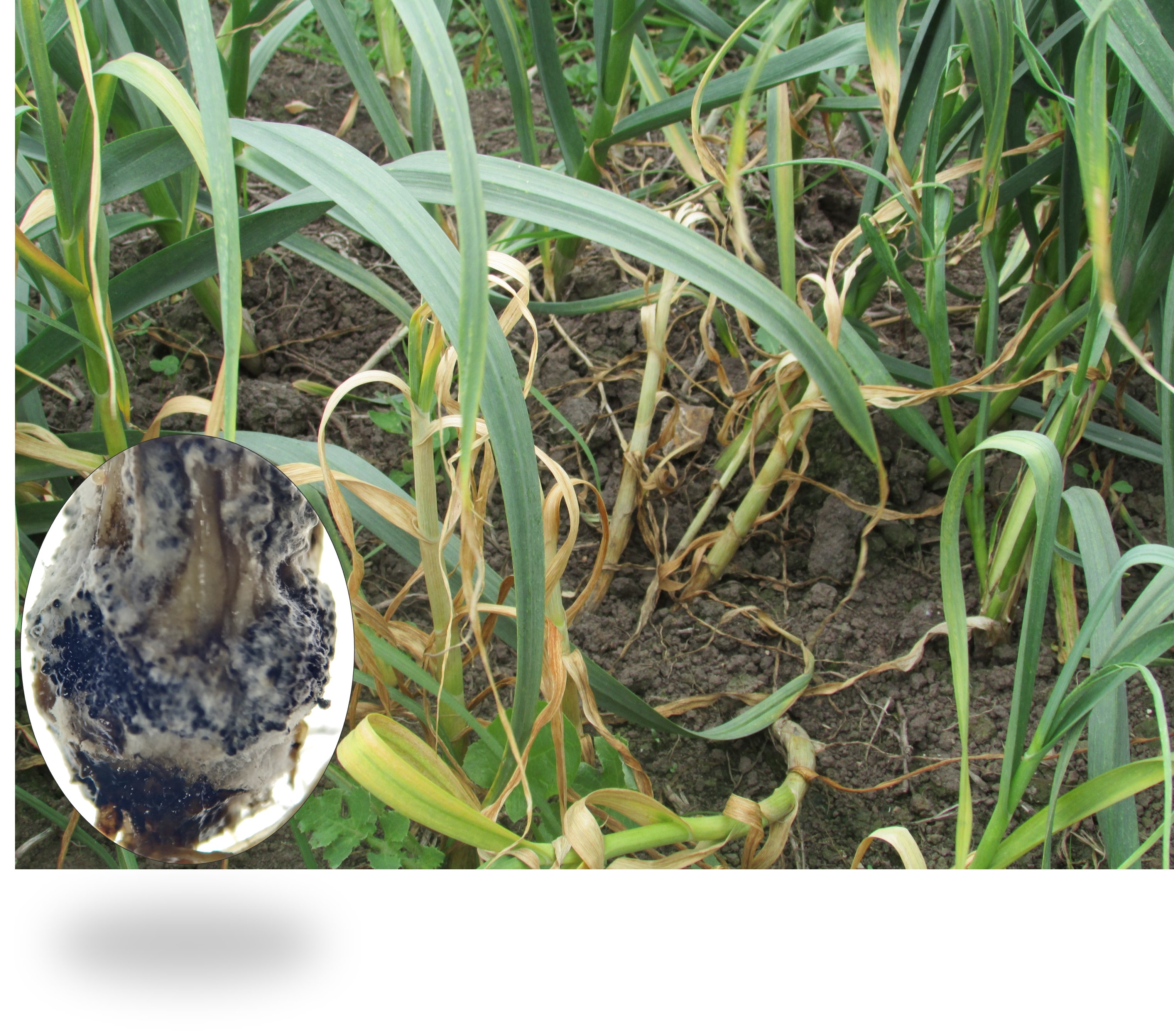Control of Sclerotium cepivorum and growth promotion in garlic (Allium sativum) whit antagonist microorganisms
DOI:
https://doi.org/10.15517/am.v33i2.46462Keywords:
white rot, biological control, growth promotionAbstract
Introduction. White rot produced by Sclerotium cepivorum causes losses greater than 50 % in garlic crops, the main control alternative is the application of chemical fungicides with limited efficacy, it is necessary to integrate alternatives that contribute to the development of disease management strategies. Objective. To evaluate the efficacy of antagonistic microorganisms applied individually and as a mixture against S. cepivorum in garlic. Materials and methods. This research was carried out under controlled conditions at the Corporacion Colombiana de Investigacion Agropecuaria (AGROSAVIA), during 2019. The soil was artificially infested with sclerotia (10 sclerotia/g soil). The efficacy of the individual use and in mixtures under different drench applications frequencies of three antagonists Trichoderma koningiopsis, Trichoderma asperellum, and Bacillus amyloliquefaciens, strains Th003, Th034, and Bs006, respectively, in the control of S. cepivorum in garlic and in the promotion of plant growth expressed as root, bulb, and foliar dry weight was evaluated. Results. The highest efficacy, with 65 % in disease control was obtained when applying Th003 at sowing and 15 das and with 56 % when applying the mixtures of Th003 + Th034 at sowing, Th003 + Th034 at sowing, 15, 30, and 45 das, and Th003 + Bs006 at sowing, 15 and 30 das, while Tebuconazole presented an efficacy of 35 %. Conclusion. The application of antagonists individually or in mixtures at different frequencies reduced mortality due to white rot in garlic. A positive effect on garlic plants growth was observed with the application of Th003 + Bs006 strains at sowing, 15 and 30 das, Th003 at sowing, Th003 at sowing and 15 dad, and Th034 + Bs006 at sowing, with higher values of dry weight with respect to the control.
Downloads

Downloads
Additional Files
Published
How to Cite
Issue
Section
License
1. Proposed policy for open access journals
Authors who publish in this journal accept the following conditions:
a. Authors retain the copyright and assign to the journal the right to the first publication, with the work registered under the attribution, non-commercial and no-derivative license from Creative Commons, which allows third parties to use what has been published as long as they mention the authorship of the work and upon first publication in this journal, the work may not be used for commercial purposes and the publications may not be used to remix, transform or create another work.
b. Authors may enter into additional independent contractual arrangements for the non-exclusive distribution of the version of the article published in this journal (e.g., including it in an institutional repository or publishing it in a book) provided that they clearly indicate that the work was first published in this journal.
c. Authors are permitted and encouraged to publish their work on the Internet (e.g. on institutional or personal pages) before and during the review and publication process, as it may lead to productive exchanges and faster and wider dissemination of published work (see The Effect of Open Access).























